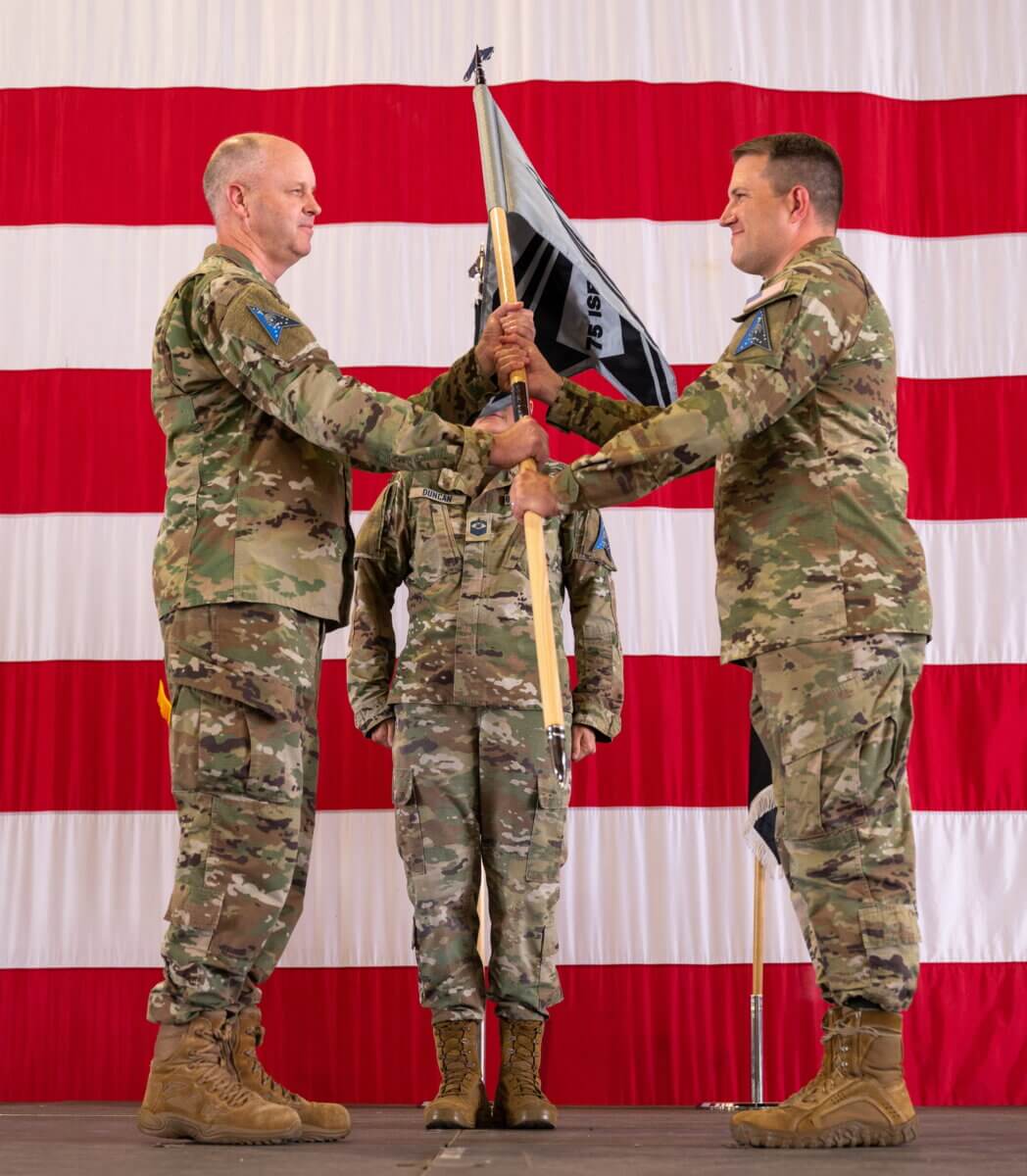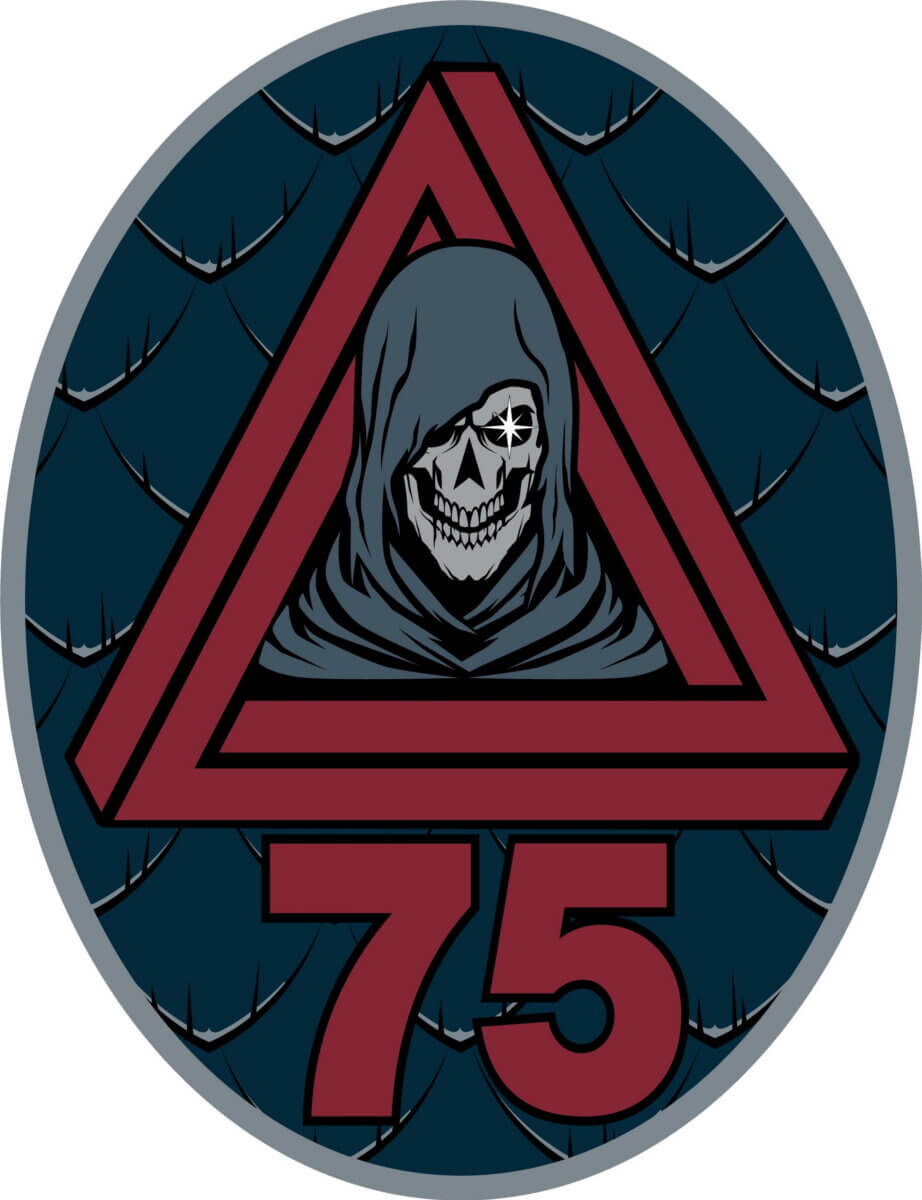PETERSON SPACE FORCE BASE, Colo. — America has deployed a formidable Space Force squadron to destroy enemy satellites. The newly commissioned 75th Intelligence, Surveillance, and Reconnaissance Squadron (ISRS) also comes with a menacing insignia: a skeletal grim reaper that signifies the demise of any adversary this branch of the U.S. military targets.
The unit will operate under Space Delta 7 (DEL 7), which provides time-sensitive intelligence essential for space domain operations, including the detection, characterization, and targeting of adversary space capabilities.
During the activation ceremony at Peterson Space Force Base in Colorado, U.S. Space Force Col. Brett Swigert, the DEL 7 commander, presented Lt. Col. Travis Anderson with the ceremonial pennant. This gesture represented the first assignment of authority from the delta commander to the 75th ISRS’s inaugural commander.
“Today is a monumental time in the history of our service,” Lt. Col. Anderson says in a media release. “The idea of this unit began four years ago on paper and has probably been in the minds of several U.S. Air Force intelligence officers even longer.”

The military further explains that the 75th ISRS has three primary mission focuses: target analysis, target development, and target engagement. Their goal is to prepare and present intelligence packages about a target and the systems to which it belongs. These packages could include information about a satellite, a ground station, or the signals transmitted between them.
“The 75th ISRS conducts advanced analysis on adversary space force and counterspace force threats along with their associated architectures,” Lt. Col. Anderson adds. “Space forces are space capabilities used by a country to facilitate their joint warfighting. Counterspace forces, also called space attack forces, are space capabilities designed to deny the United States the ability to use our satellite systems during conflict.”
According to Master Sgt. Desiree Cabrera, the 75th ISRS Operations Superintendent, the new squadron is the first and only targeting unit dedicated to supporting the U.S. Space Force and its missions.
“Over the past year, the senior enlisted leader, Senior Master Sgt. Cristy Duncan, along with the first assigned members of the targeting team, led Space Delta 7’s Operating Location-Bravo using an innovative approach to build the foundation and organizational structure of today’s 75th ISRS,” Sgt. Cabrera says. “Not only are we standing up the sole targeting squadron in the U.S. Space Force, we are changing the way targeting is done across the joint community when it comes to space and electromagnetic warfare.”

The 75th ISRS Patch Explained:
This patch was revealed as part of the 75th Intelligence, Surveillance, and Reconnaissance Squadron activation ceremony at Peterson Space Force Base, Colorado. The platinum color represents the men and women of the Space Operations Command, who faithfully carry out the Space Force mission.
The red triangle symbolizes targeting, which is the central mission of the 75th ISRS. Within this triangle, the reaper signifies the demise of any adversary that the squadron targets.
The Polaris Star “glint” in the reaper’s eye socket symbolizes the guiding light of security. It also alludes to a constant presence and vigilance in space, both now and in the future.
The reaper’s nose, shaped like the delta symbol, evokes historic ties to the earliest days of the U.S. Air Force space community. It represents both change and innovation. The scale armor background of the patch exemplifies the squadron’s strength and flexibility in the protection and defense of the space domain.
South West News Service writer Dean Murray contributed to this report.


You can explain the new agency’s patch all you want, but the significance to me is the picture of the country that is behind the presentation. The US is death to the World and this depiction of it is the truth of that statement!